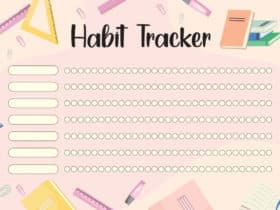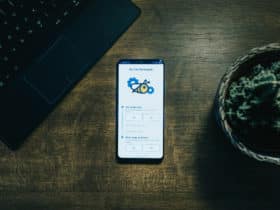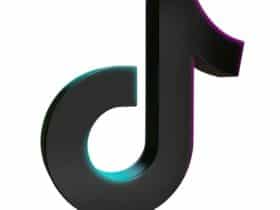As a serial entrepreneur, I’m addicted to ideas. I feed off of ’em. And nothing makes me more upset than having a great idea… and losing it. Ideas never happen at opportune times, and having the proper idea capture tools can make sure that you’ll capture all your ideas for later processing.
The problem with ideas is that they’re situational. You don’t only have ideas while you’re in front of the computer, or walking your dog. Ideas happen all the time. This poses an interesting problem when you’re trying to capture all your ideas.
In order to capture every single little idea that we have, we’ll need to take a multi-pronged approach to capturing the little bits of genius that we have throughout our day. Here’s a list of tools that can help you capture your ideas no matter what the activity.
I should note that we’re not talking about complex systems like mind mapping and other GTD systems. While they’re awesome tools, we’re only interested in the ones that allow us to quickly capture what’s tickling our brain. Tools for organizing ideas is a completely different topic.
Analog Idea Capture
Analog idea capturing is the oldest and one of the most useful forms of idea capture. Often technology can get in the way of simply storing our ideas. Analog idea capture is great for those times when you’re unplugged from the world or don’t have access to a computer. Some people (like myself) prefer analog idea capture over any other method because it’s the simplest. Here are some analog idea capture tools:
Hipster PDA. Merlin Mann’s infamous DIY creation is a staple to anyone who wants to jot ideas on the cheap. The Hipster PDA consists of 2 things: 3×5 notecards and a binder clip. It’s a simple lo-fi solution for creative people on the go.
Pocket Briefcase. The pocket briefcase expands upon the hipster PDA idea with a bit of a formal twist. For uptight types who don’t want anything other than leather touching their clothes, the pocket briefcase holsters 3×5 cards and has compartments for other scraps of paper.
Moleskine. The moleskine is nothing more than a notebook with excellent grade of paper and leather binding. While it sounds a bit excessive, anyone who’s ever used one will agree when I say that you won’t go back to the hipster PDA. There’s a certain amount of satisfaction that comes to writing ideas in one of these puppies.
Rite in the Rain. Possibly one of the more eccentric capture tools, rite in the rain is all weather notebook that was made to “specifically shed water in any weather condition.” If you’re finding yourself in adverse conditions constantly, this might be a smart tool to snag.
Desktop whiteboard. Portable whiteboards allow you to quickly add ideas, but they really shine in the fact that the ideas stay visible. The fact that you can quickly erase and add to an idea is another bonus.
Sticky notes. We all know what sticky notes do. They’re the essential office product that allow you to scrawl notes quickly, and stick them somewhere prominent so you won’t miss them. While sticky notes don’t necessarily save well over a long period of time, they’re awesome for on-the-run idea capture.
Mac Software
Mac users pride themselves on the amount and quality of organization and productivity apps. As a general rule, there are a lot more applications like this written for the Mac. However, not all of them specialize in idea capture. Here are a few that do.
OmniFocus 2. OmniFocus is a great piece of task management software. OmniGroup’s software claims to allow you to quickly capture tasks from anywhere, without switching applications. You can email yourself tasks or capture them via a dashboard widget. The other handy feature about OmniFocus is that it integrates with the iPhone, so anything you capture there will sync with your Mac. This is the task manager that I’ve been using for five years, and I never forget anything.
Screenshot. There’s nothing like a good ‘ol fashioned screenshot when it comes to capturing ideas. Apple computers allow you to resize the screenshot before you take it, and they allow you to quickly take it via a keyboard command of Cmd + Shift + 4.
There are plenty of applications that can help you capture screenshots, but since it’s built in to mac functionality, why download another program?
Windows Software
While Mac users traditionally tend to have lots more productivity applications to choose from, the Windows community appears to be catching up.
Launchy. This is an open-source, cross-platform option to give you access to your programs from the keyboard. There’s a good tutorial on setting up Launchy over at techjunkie.
Screenshot. Like the mac, Windows computers come with a built in screen capture function. Just tap the little Print Screen key in the upper right part of your keyboard, and Windows will capture a shot of what’s going on your desktop.
Screenshots are a really helpful way to visually capture what your looking at. Much like the saying “a picture is worth a thousand words”, a screen-grab can quickly show you what’s going on, without having to take the time to write it down. The only downside is that screenshots don’t allow you to search text found in screenshots, unless you’re using Evernote (more below).
Universal idea capture software
Evernote. This idea capturing software that’s available on iPhone, Mac, PC, mobile phones and Firefox. Essentially, you can capture ideas anywhere, while it syncs everywhere. Make a note on your iPhone, and it syncs online and on your computer desktop. However, the real benefit of Evernote is the ability to read text inside of images. If you took a screenshot of your desktop, Evernote would go through and scan the screenshot and extract any text it found with it, allowing you to search for it later. A very quick and handy way to capture everything and index it into a searchable database.
Evernote offers a tiered pricing scale, but you can upload up to 60 MB of information per month for free.
Simple text files. Text files are one of the oldest and simplest forms of saving ideas on a computer. No matter what the platform, you can create and save text files to your hard drive. Some might scoff at the simple nature of the text editor, but it’s easily one of my favorite platforms for capturing ideas. While it doesn’t come with the bells and whistles of software like Word, it’s quick and easy. With text files, the software doesn’t get in the way of the idea like more complicated software.
Web Apps for Idea Capture
While there are many web applications for todo lists, project management and the like, I only featured the best at idea capture. Many boast at their usefulness, but only a few really capitalize on quickly capturing thoughts and ideas. These are the creme de la creme of idea-capturing web apps.
Google Keep. This note capturing tool integrates with your Google account and lets you create notes and set reminders.
Remember the Milk. Remember the Milk (RTM) is in a whole different league when it comes to portability and the number of options for capturing ideas. Not only do they have great task management software, they also integrate with a slew of services that help you capture ideas. That’s right, idea capture at it’s finest.
RTM integrates with: Gmail, iPhone/iPod touch, Twitter and Google Calendar.
Now do this. This app is so simple it’s almost a parody on other productivity apps. You simply type in a list (separated by line breaks) of your todo items. While it’s made to be a todo tool, it can be used to quickly keep ideas on the forefront on your mind and it allows a dead-simple way to store ideas. Just click “edit list” and add your idea, thought, or simple whatever. No registration needed.
Twitter. Believe it or not, you can use the handy messaging tool on Twitter to quickly dump ideas into your account. Twitter integrates with Remember the Milk, and Brett Kelly has a great method for sending messages to yourself from Twitter. Twitter can be a very powerful tool because of the wide user base and all the applications that have been created for Twitter. You can literally access Twitter from almost any device or platform, so Twitter seems like a great candidate for ubiquitous capture.
Capture applications for the Phone
As the cell phone market continues to grow and more smart phones are entering the market, it only makes sense that more people will be using their cell phones for more and more things. Now that services are developing mobile-friendly applications, it’s becoming much easier to capture information without needing a computer or a notebook.
iPhone. Smartphones like the iPhone have changed the way that people use cell phones. With the ability to take pictures, access the web, email and text messaging, sending and receiving different forms of communication and media is now much easier. There are a myriad of productivity and capturing applications at the iPhone app store, Both iPhone and Blackberry users can take notes with default applications. While I’m not an expert on smartphones, it would appear that the iPhone’s app store has more specific applications for idea capture, like OmniFocus for the iPhone. There is an application that works for iPhones called Note2Self that allows you to record voice messages to yourself that looks very promising.
Send yourself a text message. People have been using this trick since texting was introduced to the cell phone. Just simply type your text message and send it to your phone number. It’s not the most elegant solution, but it works in a pinch.
Remembering the idea until morning. I think nearly everyone has ideas right before go to sleep, while your mind is winding down. Bert Webb has an interesting method for remembering the idea until the next morning, if you’re too tired or lazy to write the idea down.
Reach over and turn your alarm clock upside down, lay the night stand lamp on its side, place a shoe in a drawer, or drape your house coat over the lamp. In the morning, when you rise, the first thought you will have after rising will be, “Why the hell did I do that??” At that time, natural memory will take over and remind you.
Sounds like a good idea to me. I personally just prefer keeping a notepad and pen near the bed, but to each his own.
There are more tools…
This is by no means a comprehensive list of applications that help with idea capture. If you can think of any others (or more that you’d like to see), feel free to leave them in the comments below!














